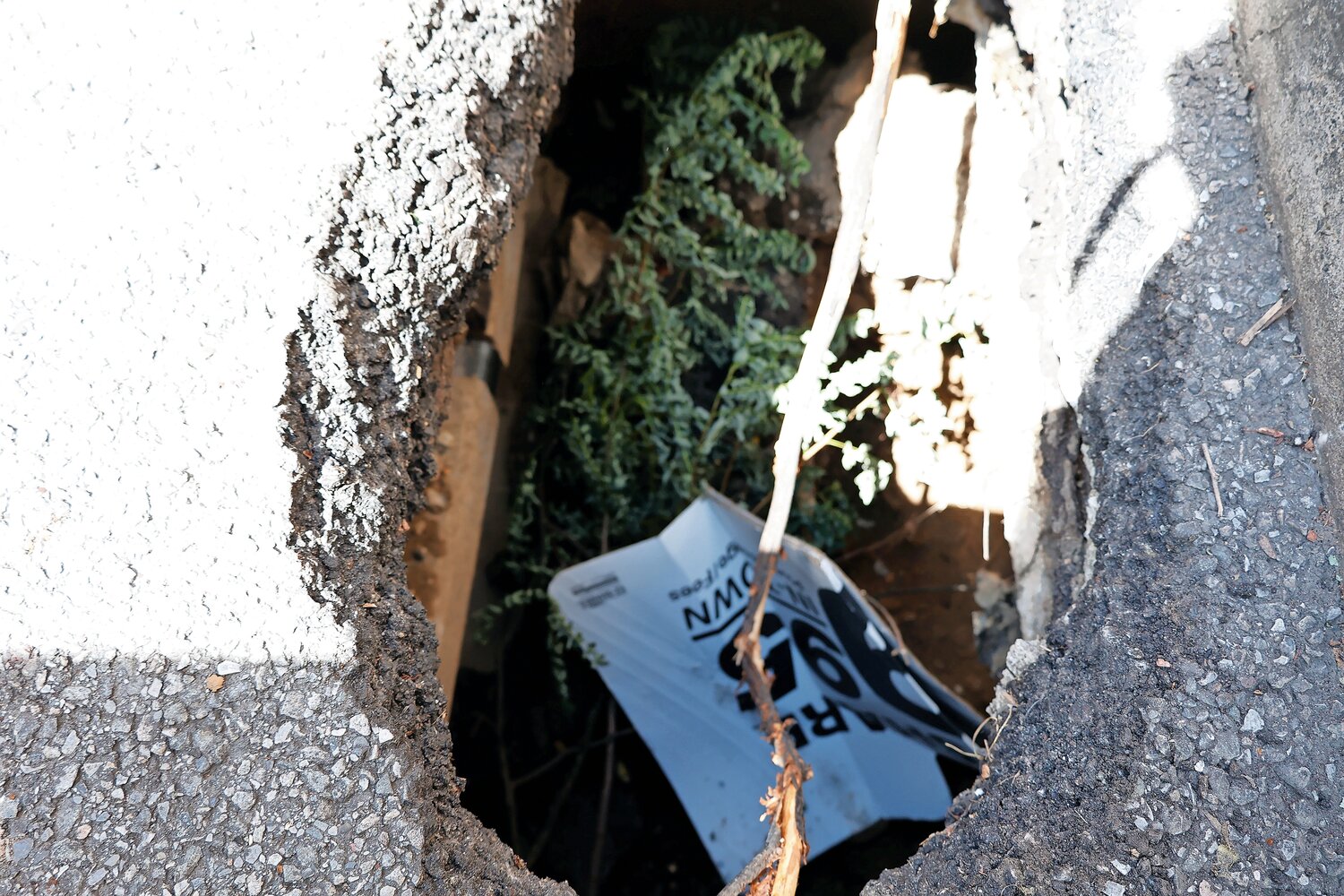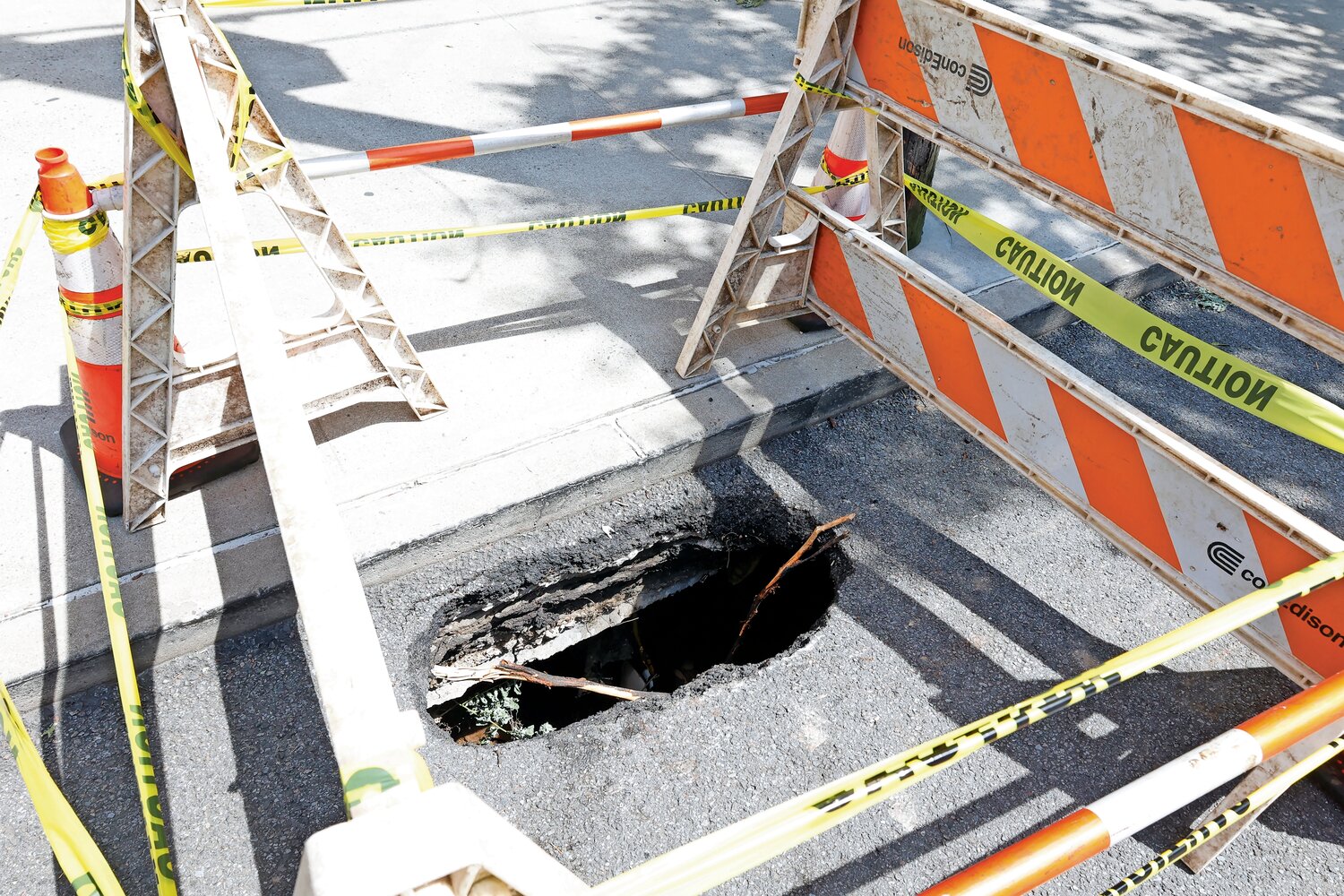Frequent sinkholes in Riverdale linked to climate change and aging infrastructure
Sinkholes have been popping up, or dropping down, all over greater Riverdale for years, with the latest appearing outside 3147 Riverdale Ave., leaving a widening gap outside of a residential building.
Riverdale has an unfortunately rich history of sinkholes.
In March, a sinkhole related to a water-main break occurred on Cambridge Avenue, and January saw a sinkhole developing on the corner of West 231st Street and Fairfield Avenue.
In previous years, sinkholes have been spotted on Greystone Avenue and West 242nd Street, Johnson Avenue, Independence Avenue, Edsall Avenue, among other streets.
The city requests all sinkholes are reported through its 311 database, referring to the roadway collapses as cave-ins.
In 2022, at an August City Council meeting, Rohit Aggarwala, city chief climate officer and commissioner of the city environmental protection department, said the city’s rise in sinkholes is due to climate change, aging infrastructure and extreme weather.
The process for sinkhole reporting is routed through 311, which oversees whether the sinkhole is in fact a sinkhole, or if it’s in fact a pothole, street excavation, depression, or other roadway defect.
A sinkhole is defined as a deep hole where the bottom cannot be seen, whereas a pothole has an obvious bottom. Depressions are dips in the road that could be potential signs of future sinkholes, and street excavations are stretches of roadway that have undergone construction and are left with uniform coverings.
Once a sinkhole has been identified, an inspector from the transportation department is sent to investigate the damage and potential cause. After inspection, maintenance of the hole can be routed to the city’s environmental protection agency, a utility, or another city agency that can fix the problem.
Former assistant commissioner for the transportation department, Vinny Maniscalco, said most sinkholes are water-related, which leaves them under the care of the city’s environmental protection agency.
“Forty-five percent of cave-ins are caused by New York City department of environmental protection infrastructure, either water mains or sewers,” Maniscalco said.
Every year, the mayor’s management report includes a segment from the city’s environmental protection agency that publishes the number of street cave-ins. Data shows 2,839 cave-ins were reported in fiscal year 2021, 3,905 reported in 2022, and 3,617 reported in 2023.
A department of environmental protection official said the area surrounding the current sinkhole on Riverdale Avenue would require greater inspection from the agency.
“The investigation into this roadway collapse is ongoing and it may turn out that another entity is responsible for the repair. In the meantime, the area is being made safe for the public,” the official said.
Further information was not provided to The Press by the agency before press time.
“Cave-ins are caused when a void develops under the pavement, almost always caused by water leaks somewhere underground. Identifying and addressing the cause of cave-ins is crucial,” Aggarwala said.
Research from Balkan Sewer and Water Main says that the most common reason for New York City’s sinkholes is the aging infrastructure of underground sewer and water pipes. Over time, the pipes begin to corrode, which leads to sewer and waterline leaks. Eventually, the leaks erode the soil surrounding the pipes, eating away at the soil packed beneath roadways and giving way for cave-ins to form.
Aging roadway infrastructure can also give way to sinkhole formation, with weatherbeaten roads in crumbling condition, eventually the damage can eat away at utilities underneath the surface.
If left unreported, sinkholes can grow large enough to become a danger to pedestrians.
The connection between sinkholes and climate change lies in the extreme rain events the city has seen over the last several years. Over the course of the last 121 years, rainfall throughout the state increased 10 percent, and numbers are expected to keep rising, according to research in the state’s climate impact assessment.
Aggarwala said the increase in rainfall also means the sewer system is being overflooded. And with more water in the sewage system than it can handle, pressure throughout the system increases, causing leaks that eventually disrupt the roadways above.










